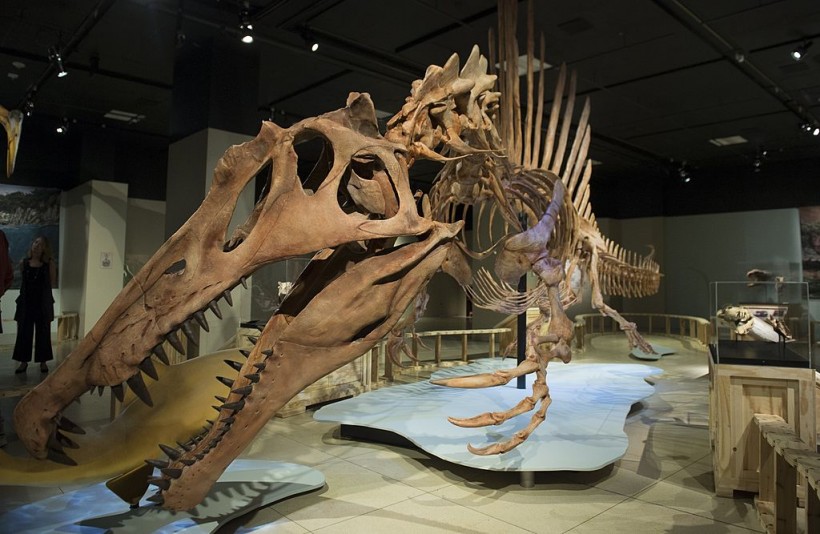(Photo : Photo credit: SAUL LOEB/AFP via Getty Images)
Amongst the fastest metabolic reactions on the world, birds remain comfortable using energy created; whereas reptiles depend on the sunlight to conserve heat.
Considering each of these taxa are related to dinosaurs, evolutionary biologists have constantly pondered whether dinosaurs possessed cold-blooded metabolic functions similar to their reptile counterparts or warm-blooded glycolysis like their bird family members.
Researchers have developed an answer: it is both.
The Warm-Blooded and Dinosaurs
The digestion of a creature relates with how much power its system requires to perform routine operations.
As per Live Science report, a greater metabolic, which needs more resources to sustain, allows a creature to become more energetic; however, the creature must consume sufficient nourishment and inhale adequate air to maintain its digestive motor operating.
Experts have discovered that warm-bloodedness, which is now exclusively observed in mammalian creatures, was relatively common across dinosaurs in an examination of 55 extant and ancient organisms, although not all dinosaurs have been warm-blooded.
Whilst the discovery of the study which was posted under the website of Nature corroborates prior research on dinosaur metabolic reactions, experts non-destructive testing approach may offer researchers unparalleled access to biochemical development in ancient species apart from dinosaurs.
Warm-blooded digestive systems were also discovered in three distinct developmental bloodlines: dinosaurs, mammals, and plesiosaurs, a collection of ancient plesiosaurs. The scientists tracked the development of warm-blooded and cold-blooded physiology across antiquity by studying animals from diverse dinosaur families.
According to interview of Jasmina Wiemann, a research scientist at CalTech and primary writer of a latest report on dinosaur metabolic rates with News Scientist, the expert stated that birds acquired their unusually rapid metabolism from their dinosaur relatives, which is really fascinating.
Dinosaurs were classified into two main divisions during the Triassic period, approximately 251.9 million and 201.3 million years ago, which are the saurischians ("lizard-hipped" dinosaurs) and ornithischians ("bird-hipped" dinosaurs).
While birds seem to be the sole dinosaur subgroup that withstood the Cretaceous era global catastrophe, therefore it may appear that their incredibly busy metabolic rates gave them an edge. They discovered that dinosaurs derived from a progenitor were most certainly warm-blooded, although dinosaurs did not all remain such.
Also read: Snakes and Spider Venom is Unexpectedly a Sterile Environment for Microbes
Probability of Having Warm-Blooded Dinosaur Ancestors
A hyperactive thyroid also raises the temperature, which maintains creatures heated, thus the phrase warm-blooded, or endothermic.
Earlier research discovered that Stegosaurus, an ornithischian species of equipped plant-eaters, had an unusually sluggish population increase - a sign of a slow, cold-blooded metabolic. Other research discovered that hadrosaurs, a type of duck-billed vegetation processors, had bodily functions that were too varied to be warm-blooded.
Deducing metabolism developmental trends in dinosaurs has generated issues regarding the metabolic rates of extant creatures. They were actively searching for organic matter from metabolism that may indicate oxygen utilization in a creature 's body - a direct estimate of energy expenditure.
Researchers believes that additional researches employing the team's study strategy will help researchers understand metabolism dynamics. Rather than reducing rare relics to powder for the novel experiment, experts utilized a light-scattering microscopy to examine the molecular formula of dinosaur skeletons.
Finding illustrates that saurischians, which included meat-eating theropods such as Tyrannosaurus and Allosaurus, were warm-blooded animals resembling their forebears, according to Science Advances.
Related article: Axolotls Life Span: Are These Giant Salamanders That Can Regenerate Body Parts Going Extinct?
© 2024 NatureWorldNews.com All rights reserved. Do not reproduce without permission.






